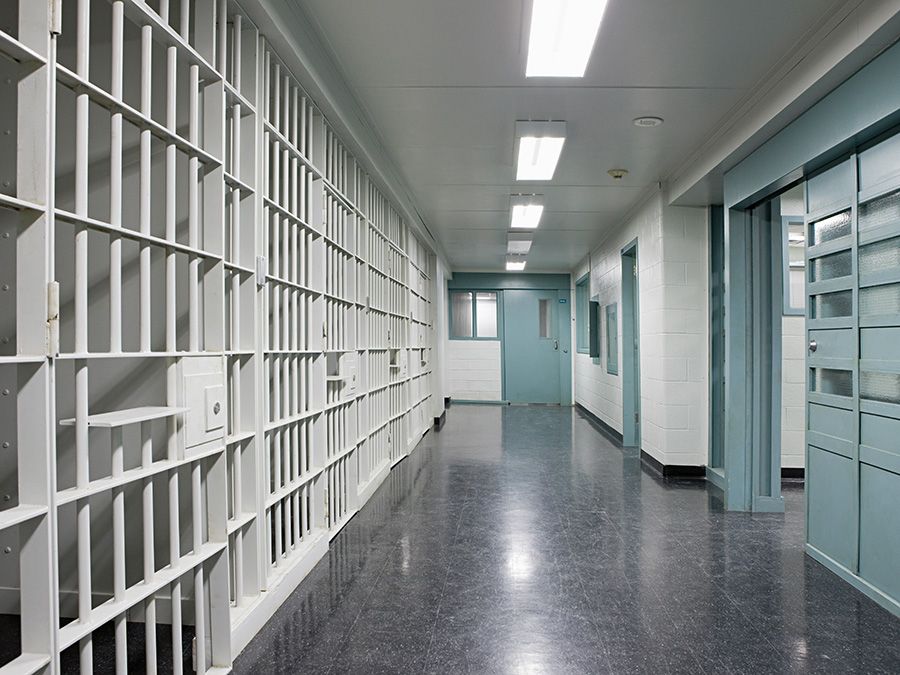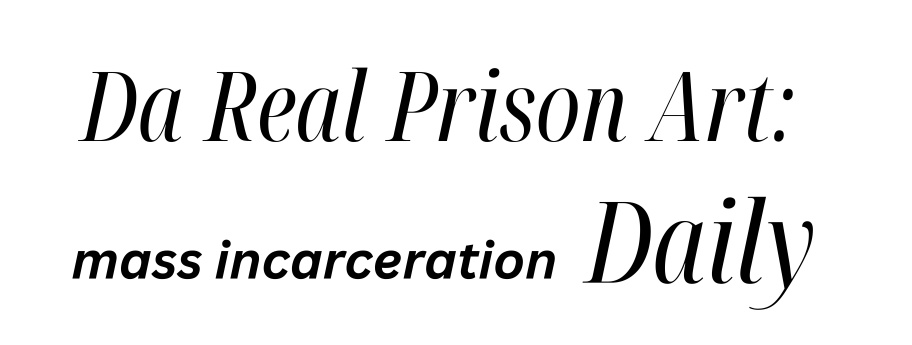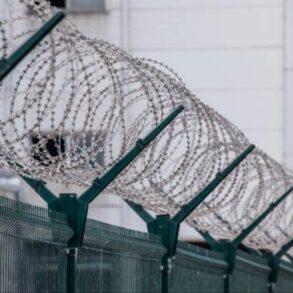
© Image Source/Getty Images
To access extended pro and con arguments, sources, and discussion questions about whether prisons should be privatized, go to ProCon.org.
Prison privatization generally operates in one of three ways:
- Private companies provide services to a government-owned and managed prison, such as building maintenance, food supplies, or vocational training;
- Private companies manage government-owned facilities; or
- Private companies own and operate the prisons and charge the government to house inmates.
In the United States, private prisons have their roots in slavery. Some privately owned prisons held enslaved people while the slave trade continued after the importation of slaves was banned in 1807. Recaptured runaways were also imprisoned in private facilities as were black people who were born free and then illegally captured to be sold into slavery. Many plantations were turned into private prisons from the Civil War forward; for example, the Angola Plantation became the Louisiana State Penitentiary (nicknamed “Angola” for the African homeland of many of the slaves who originally worked on the plantation), the largest maximum-security prison in the country. In 2000, the Vann Plantation in North Carolina was opened as the private, minimal security Rivers Correctional Facility (operated by GEO Group), though the facility’s federal contract expired in Mar. 2021.
Inmates in private prisons in the 19th century were commonly used for labor via “convict leasing” in which the prison owners were paid for the labor of the inmates. According to the Innocence Project, Jim Crow laws after the Civil War ensured the newly freed black population was imprisoned at high rates for petty or nonexistent crimes in order to maintain the labor force needed for picking cotton and other labor previously performed by enslaved people. However, the practice of convict leasing extended beyond the American South. California awarded private management contracts for San Quentin State Prison in order to allow the winning bidder leasing rights to the convicts until 1860. Convict leasing faded in the early 20th century as states banned the practice and shifted to forced farming and other labor on the land of the prisons themselves.
What Americans think of now as a private prison is an institution owned by a conglomerate such as CoreCivic, GEO Group, LaSalle Corrections, or Management and Training Corporation. This sort of private prison began operations in 1984 in Tennessee and 1985 in Texas in response to the rapidly rising prison population during the war on drugs. State-run facilities were overpopulated with increasing numbers of people being convicted for drug offenses. Corrections Corporation of America (now CoreCivic) first promised to run larger prisons more cheaply to solve the problems. In 1987, Wackenhut Corrections Corporation (now GEO Group) won a federal contract to run an immigration detention center, expanding the focus of private prisons.
In 2016, the federal government announced it would phase out the use of private prisons: a policy rescinded by Attorney General Jeff Sessions under the Trump administration but reinstated under President Biden. However, Biden’s order did not limit the use of private facilities for federal immigrant detention. 20 US states did not use private prisons as of 2019.
In 2019, 115,428 people (8% of the prison population) were incarcerated in state or federal private prisons; 81% of the detained immigrant population (40,634 people) was held in private facilities. The federal government held the most (27,409) people in private prisons in 2019, followed by Texas (12,516), and Florida (11,915). However, Montana held the largest percentage of the state’s inmates in private prisons (47%).
On. Jan. 20, 2022, the federal Bureau of Prisons reported 153,855 total federal inmates, 6,336 of whom were held in private facilities, or about 4% of people in federal custody.
- Privatizing prisons can reduce prison overpopulation, making the facilities safer for inmates and employees.
- Private prisons can transform the broken government-run prison system.
- Private prisons offer innovative programs to lower the rates of re-imprisonment.
- Private prisons exploit employees and prisoners for corporate gain.
- Privatizing prisons is costly and leaves the most expensive prisoners to public prisons.
- All prisons—not just privately operated ones—should be abolished.
This article was published on January 21, 2022, at Britannica’s ProCon.org, a nonpartisan issue-information source.
This post was originally published on this site be sure to check out more of their content.








